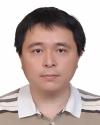研究成果 - 許良彥 博士
尖端材料與表面科學組

Theory of molecular emission power spectra. I. Macroscopic quantum electrodynamics formalism [Special Issue: Excitons: Energetics and Spatio-temporal Dynamics]
Journal of Chemical Physics 153, 184102 (2020); https://doi.org/10.1063/5.0027796.
We study the emission power spectrum of a molecular emitter with multiple vibrational modes in the framework of macroscopic quantum electrodynamics. The theory we present is general for a molecular spontaneous emission spectrum in the presence of arbitrary inhomogeneous, dispersive, and absorbing media. Moreover, the theory shows that the molecular emission power spectra can be decomposed into the electromagnetic environment factor and lineshape function. In order to demonstrate the validity of the theory, we investigate the lineshape function in two limits. In the incoherent limit (single molecules in a vacuum), the lineshape function exactly corresponds to the Franck–Condon principle. In the coherent limit (single molecules strongly coupled with single polaritons or photons) together with the condition of high vibrational frequency, the lineshape function exhibits a Rabi splitting, the spacing of which is exactly the same as the magnitude of exciton–photon coupling estimated by our previous theory [S. Wang et al., J. Chem. Phys. 151, 014105 (2019)]. Finally, we explore the influence of exciton–photon and electron–phonon interactions on the lineshape function of a single molecule in a cavity. The theory shows that the vibronic structure of the lineshape function does not always disappear as the exciton–photon coupling increases, and it is related to the loss of a dielectric environment.
link: 相關連結
目前位置:本所人員 / 研究人員 / 許良彥 / 研究成果
中央研究院 原子與分子科學研究所版權所有 |
個人隱私權聲明 |
保有個資檔案公開項目彙整表 |
行動版
地址: 106319 台北市羅斯福路四段一號 或 106923 臺北臺大郵局 第23-166號信箱
電話:886-2-2362-0212 傳真:886-2-2362-0200 電子郵件:iamspublic@gate.sinica.edu.tw
最後更新於 2024-04-22 22:44:49
地址: 106319 台北市羅斯福路四段一號 或 106923 臺北臺大郵局 第23-166號信箱
電話:886-2-2362-0212 傳真:886-2-2362-0200 電子郵件:iamspublic@gate.sinica.edu.tw
最後更新於 2024-04-22 22:44:49
 中央研究院 原子與分子科學研究所
中央研究院 原子與分子科學研究所
